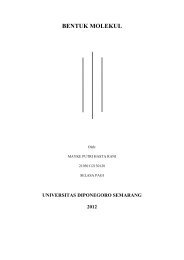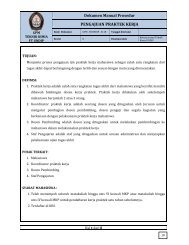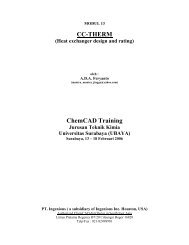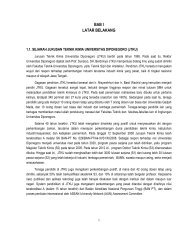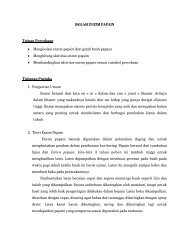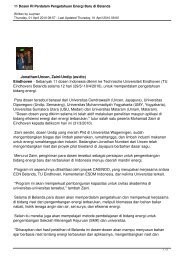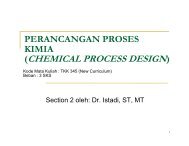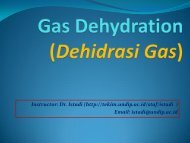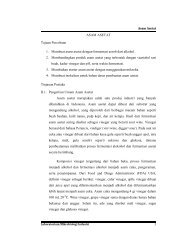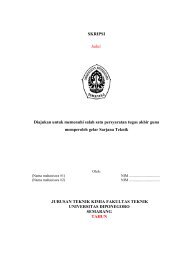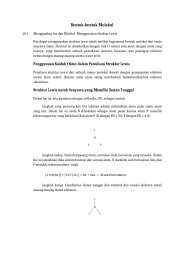Alkylation of Benzene by Propylene to Cumene 6
Alkylation of Benzene by Propylene to Cumene 6
Alkylation of Benzene by Propylene to Cumene 6
- No tags were found...
You also want an ePaper? Increase the reach of your titles
YUMPU automatically turns print PDFs into web optimized ePapers that Google loves.
6.5 Energy Integration 189Figure 6.9 Energy saving <strong>by</strong> multieffect distillation:(a) standard arrangement, (b) sloppy split <strong>of</strong> heavy component,(c) sloppy split <strong>of</strong> light component.for driving the reboiler will set a hard constraint on the maximum column pressure.Obviously, the reflux and feed temperature <strong>of</strong> the columns have <strong>to</strong> beoptimized.In the following, we focus the attention on energy saving for the benzene recyclecolumn. Since the separation regards essentially a binary mixture with very largedistillate/bot<strong>to</strong>ms ratio, the analogy with multieffect evaporation seems rational.Accordingly, we split the original feed in<strong>to</strong> two parts for two columns in parallel,operated at high and low pressure, respectively. In addition, the temperature <strong>of</strong><strong>to</strong>p and bot<strong>to</strong>m may be manipulated <strong>by</strong> the product composition. By this approach,called multieffect distillation, three possibilities <strong>of</strong> heat integration could be imagined,as illustrated in Figure 6.9 .In alternative (a) pure products are obtained in each column. Since the relativevolatility diminishes with the pressure, higher reflux is needed in the HP column.The balance <strong>of</strong> duties can be obtained <strong>by</strong> adjusting the split <strong>of</strong> the feed. Roughlyspeaking, <strong>by</strong> double - effect distillation the energy consumption is divided <strong>by</strong> two.In alternative (b) there is a large temperature difference between <strong>to</strong>p and bot<strong>to</strong>mthat may be exploited <strong>by</strong> a sloppy split in the HP column with the heavy component,while in alternative (c) this is done with the light component. Alternative (c)is the best for the present case study since it allows a lower temperature <strong>of</strong> the hotutility.The modified flowsheet is presented in Figure 6.10 : the low - pressure column(C - 2A) operates at 3 bar, while the high - pressure column (C - 2B) operates at 8 bar.Note that the bot<strong>to</strong>m stream <strong>of</strong> (C - 2B) may contain an important amount <strong>of</strong>benzene. The examination <strong>of</strong> the pr<strong>of</strong>iles shows an imbalance in vapor flow in thelower part <strong>of</strong> the column. In consequence, the duty <strong>of</strong> the reboiler <strong>of</strong> (C - 2B) maybe ensured <strong>to</strong> a large extent <strong>by</strong> a side - stream heater. In this way, the heat can betransferred at a more convenient temperature level and higher driving force. In



